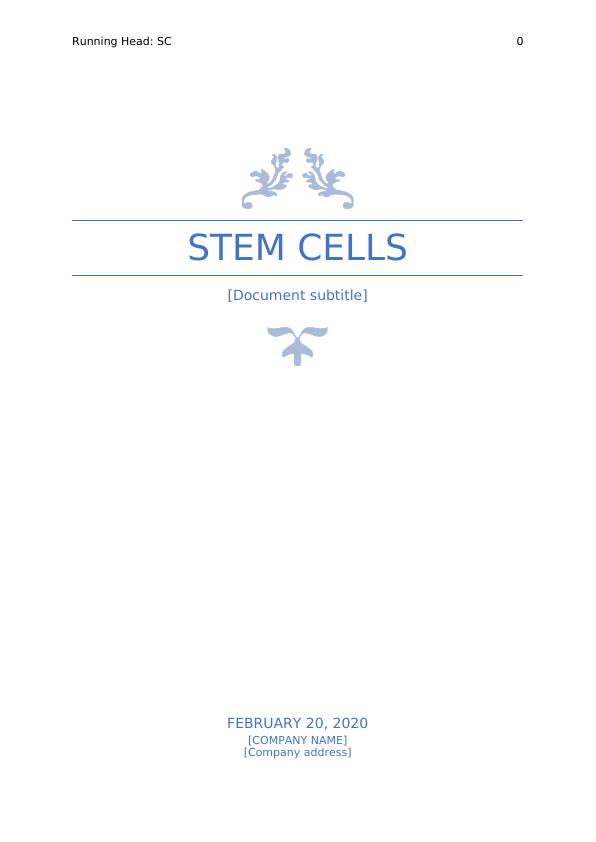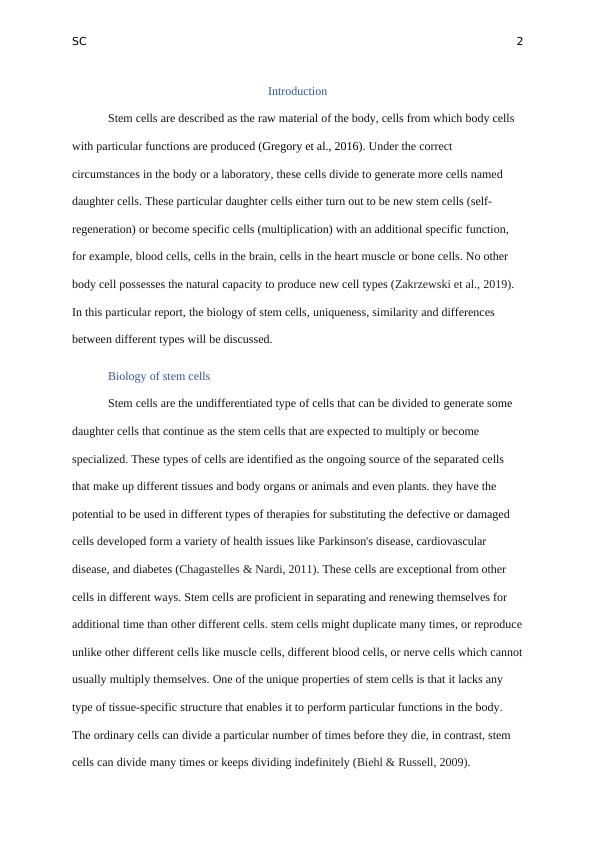Biology of stem cells and their Pros and cons
Added on 2022-08-13
7 Pages1501 Words12 Views
End of preview
Want to access all the pages? Upload your documents or become a member.
Stem Cell Research: Biology, Types, and Applications
|3
|969
|51
Ethical issues in biotechnology - Case Study
|10
|2754
|30
Stem Cell Treatment for Spinal Cord Injuries: Design and Conduct of Experiments
|4
|1144
|301
Stem Cells: Science, Policy and Ethics - A Bioethics Study
|6
|1193
|151
An Overview on Stem Cells
|5
|1335
|190
General Properties of Stem Cells Assignment
|9
|1608
|13



